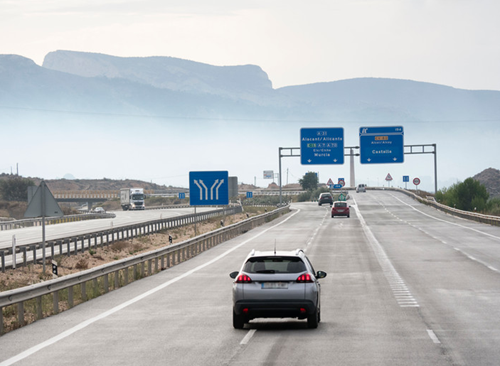COIVD-19 led to a reduction in traffic in 2020, yet highway deaths increased. Henry Albert discusses how empty roads may have contributed to reckless driving.

Last week, I saw a headline appear on Overdrive Magazine that caught my eye. It was titled, “Truck involved fatalities fell in 2020, despite an overall increase in highway deaths”. I’m always interested in the figures that the media uses in their reporting. It’s possible to use the numbers to paint any picture they desire. A story could have the headline of traffic deaths being at record highs, while at the same time traffic deaths could be at a record low. The more accurate measure in determining whether government policies, safety advances, and operational influences are affecting highway safety, is in the number of deaths or accidents, per mile traveled.
I find it interesting that around the year 2007, there were some fairly dramatic decreases in fatal motor vehicle crashes reported. Here’s a summary that I got from the crash statistics at National Highway Traffic Safety Administration (NHTSA) Traffic Safety Facts 2007 Data:
- In 2007, 41,059 people lost their lives in motor vehicle crashes – a decrease of 4% from 2006 (42,078).
- The fatality rate per 100 million VMT (vehicle miles traveled) in 2007 was 1.37.
- The injury rate per 100 million VMT in 2007 was 83.
- The fatality rate per 100,000 population was 13.61 in 2007, a decrease of 5% from the 2006 rate of 14.30.
- An average of 112 people died each day in motor vehicle crashes in 2007 – one every 13 minutes.
- In 2005, motor vehicle crashes were the leading cause of death for every age from 3 through 6, and 8 through 34.
These numbers seem to have been decreasing from the mid-1970s and continuing for four decades into the 2000s. So, what was so different in late 2007 that was reducing traffic accidents in such a dramatic fashion? The only three factors that I can conceive, are the beginning of the great recession, a rapid increase in fuel prices, and the increased deployment of vehicle safety systems.
Let's get back to what’s going on today, with an increase in vehicle occupant fatalities while having a reduction in truck-involved traffic fatalities. The one silver lining of being a truck driver during the COVID-19 pandemic crisis was the reduction of traffic on our nation's highways. There were people thanking truck drivers as essential workers at a time when our job as truck drivers was made easier due to the elimination of the majority of the traffic on our nation's highways. Gridlock was a thing of the past! Rush hour typically didn’t even last an hour! And yet, the fatality rate increased. Here are the figures, according to the NHTSA:
- An estimated 38,680 people died in crashes in 2020 – an increase of about 7.2% over 2019's 36,096 fatalities reported.
- At the same time, data from the Federal Highway Administration indicated that vehicle miles traveled decreased by about 430.2 billion miles or 13.2% from 2019.” (It’s much easier for me to wrap my head around the 13.2% figure, rather than the 430.2 billion miles.)
- NHTSA's numbers revealed that truck-involved crashes equated to an estimated 4,895 fatalities - which was a reduction from the 5,005 fatalities recorded in 2019.
Here are some other noteworthy figures that were extracted from the Overdrive Online article reporting on NHTSA's 2020 preliminary vehicle crash fatality data:
- Fatalities on rural local / collector roads (up 11% from 2019), urban interstates (up 15%), and urban collector roads (up 12%).
- Fatalities during nighttime (up 11%)
- Fatalities during weekends (up 9%)
- Fatalities in vehicles 10 years or older (up 6%)
- Fatalities in rollover crashes (up 9%)
- Fatalities with occupant ejection (up 20%)
- Fatalities in single-vehicle crashes (up 9%)
- Fatalities in speeding-related crashes (up 11%)
- Fatalities in the 16 – 24 age group (up 15%), the 25 – 34 age group (up 18%), and the 35 – 44 age group (up 14%)
- Fatalities of males (up 9%)
- Fatalities of unrestrained occupants of passenger vehicles (up 15%)
- Fatalities in police-reported alcohol involvement crashes (up 9%)
It seems as though NHTSA's research indicates a change in driving patterns and behaviors during the recent national public health emergency. There was a reduction in the miles driven, and it seems as though the remaining drivers on the road partook in more aggressive driving, including speeding, driving under the influence of drugs or alcohol, and failing to use basic safety devices such as seatbelts. The agency also added that traffic data indicated that average speeds increased throughout the year with examples of extreme speeds becoming a regular occurrence.
What I noticed from my account, behind the windshield of my Cascadia, was people driving recklessly at speeds that were unjustifiably high. Part of the dash display in my Cascadia indicates the speed at which vehicles in front of me are traveling. It’s not uncommon for me to glance down and see vehicles coming over to the lane in front of me traveling at speeds north of the century mark in construction zones. These behaviors, which have become normal with less congested highways due to an increased number of people working from home, are a dangerous, developing trend. The good news in all of this is that commercial vehicle-related fatalities and incidents fell during this same period.
My closing thought is “Who would have ever thought that a reduction in traffic congestion would lead to a higher fatality rate?”.
https://www.npr.org/2021/03/05/974006735/tragic-driving-was-down-in-2020-but-traffic-fatality-rates-surged
https://www.bloomberg.com/news/articles/2021-03-09/traffic-plummeted-in-2020-but-fatal-crashes-rose
https://www.overdriveonline.com/business/article/15065890/truckinvolved-traffic-fatalities-fell-in-2020-despite-overall-increase-in-highway-deaths
https://crashstats.nhtsa.dot.gov/Api/Public/ViewPublication/810993